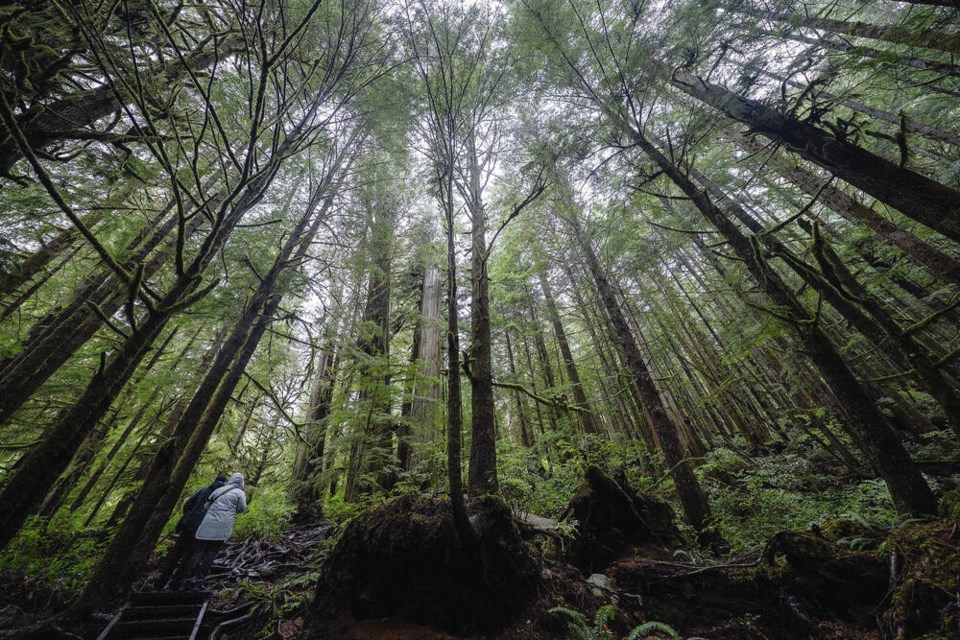A commentary by a 40-year employee of the B.C. Forest Service who held senior professional positions in inventory, silviculture and forest health.
With many forestry communities upset with the poor stewardship of their local forests and with contamination of their drinking water from clearcut logging, one wonders why appeasing initiatives like the Old Growth Strategy (1991), the Protected Areas Strategy (1993) and the Old Growth Deferral Initiative (2021) have not delivered.
The only substantive changes to how forests are stewarded, or not, have resulted from new legislation. Politicians eager to appease public concerns about forestry without conviction (i.e., without changing the law), do so by offering up these flavour-of-the-month, appeasing initiatives, which are bound to fizzle and fail because their requirement is not rooted in law.
For example, the 1991 Old Growth Strategy morphed into the Protected Areas Strategy as a response to Canada’s commitment to the goals of the 1992 United Nations’ convention on biodiversity, one of which is to conserve biodiversity.
Instead of protecting representative areas of biodiversity across the province, the government ended up with about half the protected area being rock and ice in the alpine.
Thirty years later in 2021, having sidelined the Old Growth Strategy of 1991, the government initiated the Old Growth Deferral Initiative to appease public opposition to the logging of primary forests. Over two years, this initiative has become an exercise in “talk-and-log,” while the primary forests continue to be destroyed.
Having blown the chance to protect a representative framework of provincial biodiversity in the Protected Areas Strategy, the government is at it again, 30 years later, with the latest appeasing initiative — the Biodiversity and Ecosystem Health Framework.
The big changes in forest stewardship happened in 1978 with the passing of the Ministry of Forests and Range Act and a brand-new Forest Act; in 1995, with the enactment of the Forest Practices Code of British Columbia Act; in 2002, with the passing of the Forest and Range Practices Act; and in 2004, with the rescinding of the Code.
The passing of the Forest and Range Practices Act and the rescindment of the Code fettered the responsibility of government to steward the forests. That responsibility no longer resides in forest legislation and has been devolved to industry and the resource professionals.
What is significant about the legislative changes after 1978 is that the 1978 Ministry of Forests and Range Act survived and remains in force. Why is that? In a nutshell, the Act does not provide the forests ministry with a stewardship purpose.
All the other main forestry acts since 1978 deal with how the forests are stewarded; whereas the Ministry of Forests and Range Act spells out why the forest ministry exists and what it does as described by five purposes and functions — it is the mission statement for the ministry.
So, what are the five purposes and functions of the forest ministry? For the most part, they are timber-centric and industry-focused:
1. To encourage maximum productivity of the forest and range resources in British Columbia;
2. To manage, protect and conserve the forests and range resources of the government, having regard to the immediate and long-term economic and social benefits they may confer on British Columbia;
3. To plan the use of the forests and range resources of the government, so that the production of timber and forage, the harvesting of timber, the grazing of livestock and the realization of fisheries, wildlife, water, outdoor recreation and other natural resource values are co鈥憃rdinated and integrated, in consultation and co-operation with other ministries and agencies of the government and with the private sector;
4. To encourage a vigorous, efficient and world competitive timber processing industry, and ranching sector in British Columbia; and,
5. To assert the financial interest of the government in its forest and range resources in a systematic and equitable manner.
These five purposes and functions may have served the interests of British Columbia in the late 1970s but not into the ’80s and ’90s, and certainly not into the 21st century. Astonishingly, in 2024, the forest ministry has no stewardship purpose for the conservation of biodiversity, soil and water, for the maintenance of ecosystem health and for the sustainable use of forest resources.
We need to rewrite the purposes of the forest ministry to include a stewardship purpose in a new Ministry of Forests Act for the 21st century that will strengthen ecological stewardship with enforceable regulations in all forest legislation.




